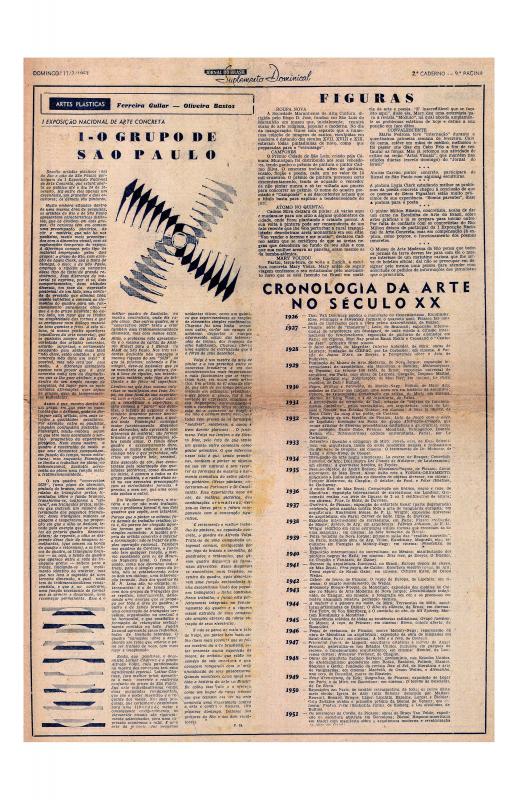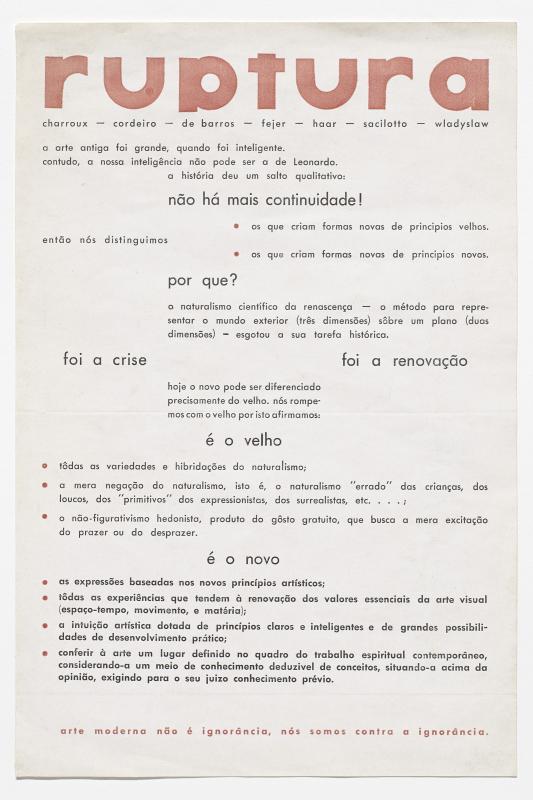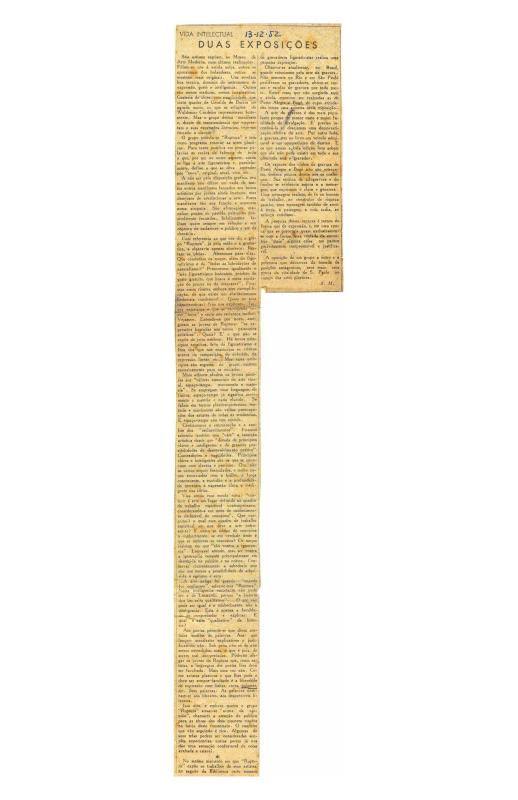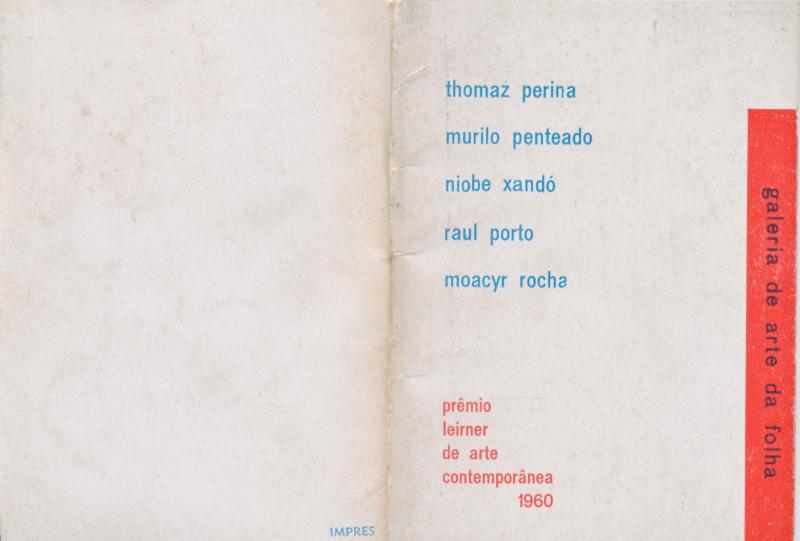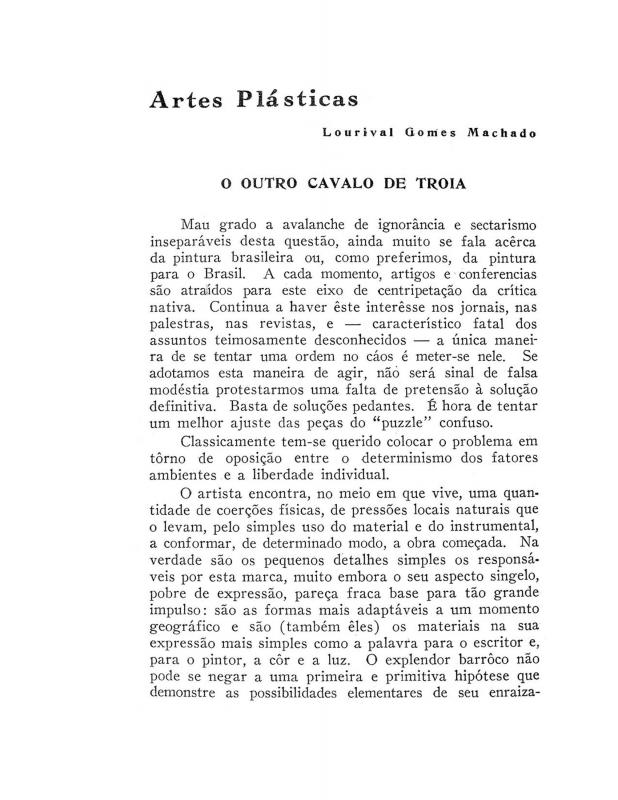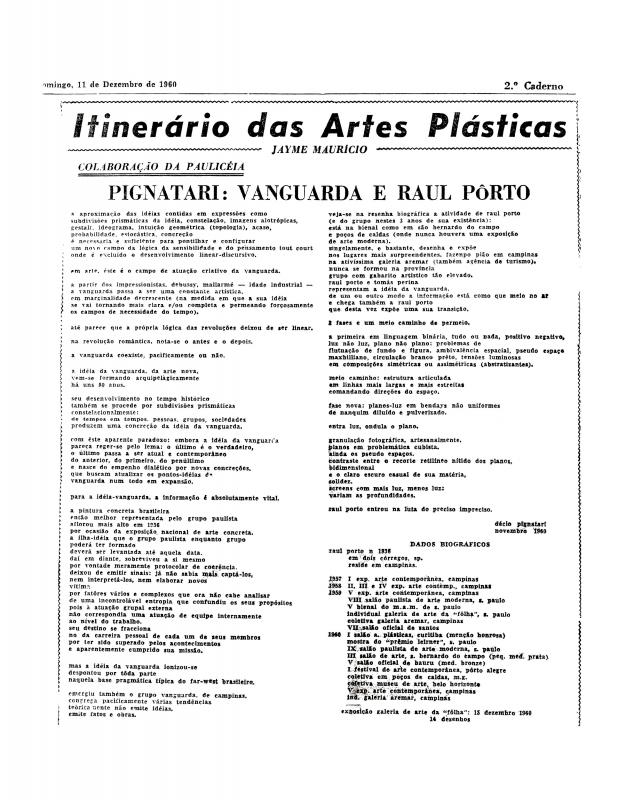Anatol Wladyslaw (1913–2004) was born in Warsaw and came to São Paulo in 1930, where he trained as an engineer. Though he began studying painting with Lucy Citti Ferreira and, later, Yolanda Mohaly in the late 1930s, his biography in the catalogue indicates that he considers himself to be self-taught. He frequented Samson Flexor’s Atelier Abstração, a studio that taught basic abstract principles, hosted recitals and lectures, and functioned as a gathering place for artists and intellectuals. He later joined the Grupo ruptura, the group of São Paulo Concrete artists started by Waldemar Cordeiro, Luiz Sacilotto, Kazmer Fejer, Lothar Charoux (all of whom signed the 1952 manifesto), Hermelindo Fiaminghi, and Mauricio Nogueira Lima, among others. Wladyslaw, however, resisted having his work identified with any particular school of thought. In the mid-1950s, according to Vieira, a distinct lyricism and Informalism began to appear in his abstract painting. Then, in 1959, he adopted the tachisme style.
[For complementary readings about the Grupo ruptura, see the ICAA Digital Archive: “I - O Grupo de São Paulo: I Exposição Nacional de Arte Concreta” (doc. no. 1087166) by Ferreira Gullar; “Ruptura” (doc. no. 771349) and “Manifesto Ruptura” (doc. no. 1232213) by Lothar Charoux and others; see also “Duas exposições” (doc. no. 1085432) by Sérgio Milliet.]
Wladyslaw’s very powerful pictorial gesture may well explain his honorary exhibition at the Galeria de Arte das Folhas. In 1957 the major art promoters in São Paulo noticed that important figurative artists had been excluded from the biennial, which was more focused on Concrete art. As a result, the industrialist Isaí Leirner (who was, at the time, the director of the Museu de Arte Moderna de São Paulo) sponsored an alternative exhibition of works by twelve São Paulo artists. This first exhibition—which was later called the Prêmio Leirner de Arte Contemporânea—was held in the lobby of the building where the newspaper Folha de São Paulo had its offices. Leirner eventually created a space specifically for this purpose, known as the Galeria de Arte das Folhas (which was open from 1958 to 1962), where exhibitions,debates, and lectures were organized to discuss a wide range of trends and styles other than the ones endorsed by the organizers of the Bienal de São Paulo. Leirner and the other businessmen who were involved in the Galeria often bought the works exhibited there, which they then donated to various museums, thus contributing to the institutional recognition of participating artists. During its four-year lifespan the Galeria introduced many emerging artists, such as: Franz Weissmann, Regina Silveira, Maria Helena Andrés, Mário Silésio, Emiliano Di Cavalcanti, Willys de Castro, and Hermelindo Fiaminghi, among others. [See the entire catalogue in the ICAA Digital Archive: “Prêmio Leirner de Arte Contemporânea, 1960” (doc. no. 1232976).]
This catalogue was also used for an exhibition of works by Paulo Rissone and for the retrospective of works by Samson Flexor, both of whom were prizewinners at the 1958 Prêmio Leirner de Arte Contemporânea. [For complementary reading on this subject, see: “Quando ouço falar em cultura, puxo o meu revolver” (doc. no. 1110460) by Oswald de Andrade Filho; “O outro cavalo de Troia” (doc. no. 1110724) by Lourival Gomes Machado; and “Vanguarda e Raul Porto” (doc. no. 1233071) by Décio Pignatari.]

